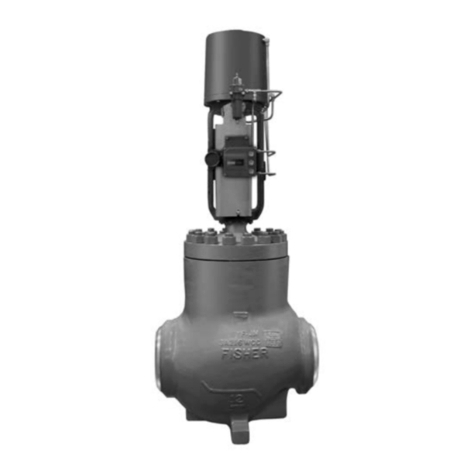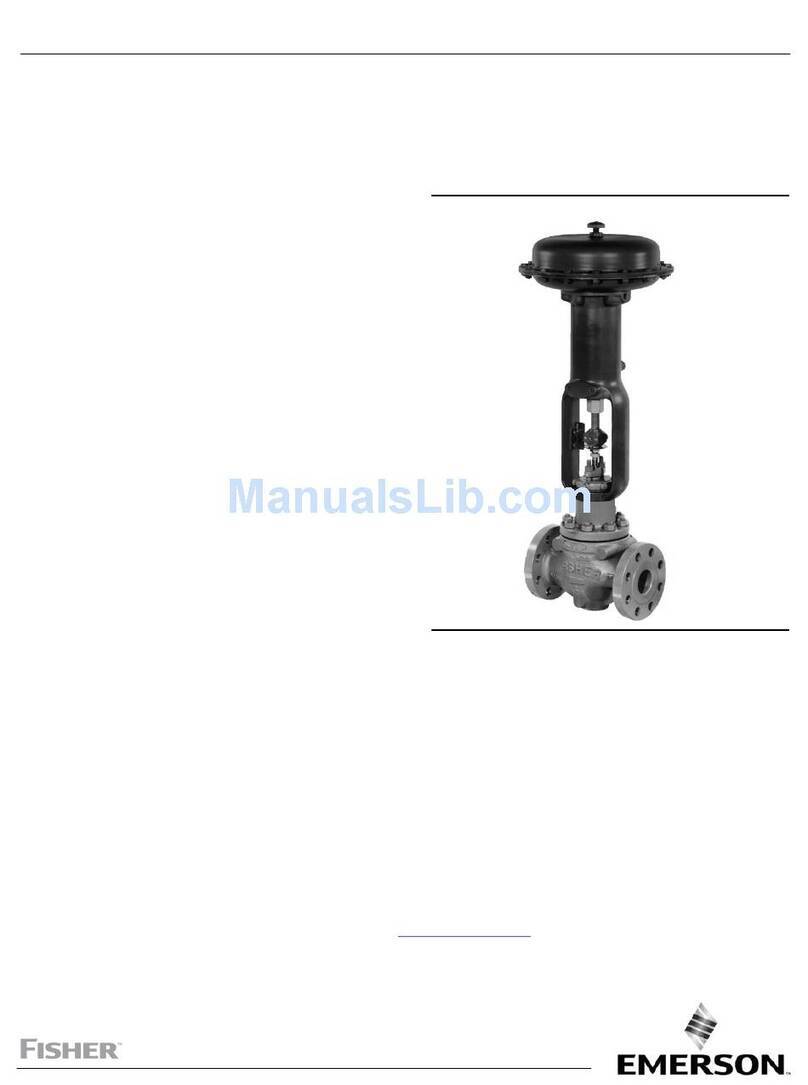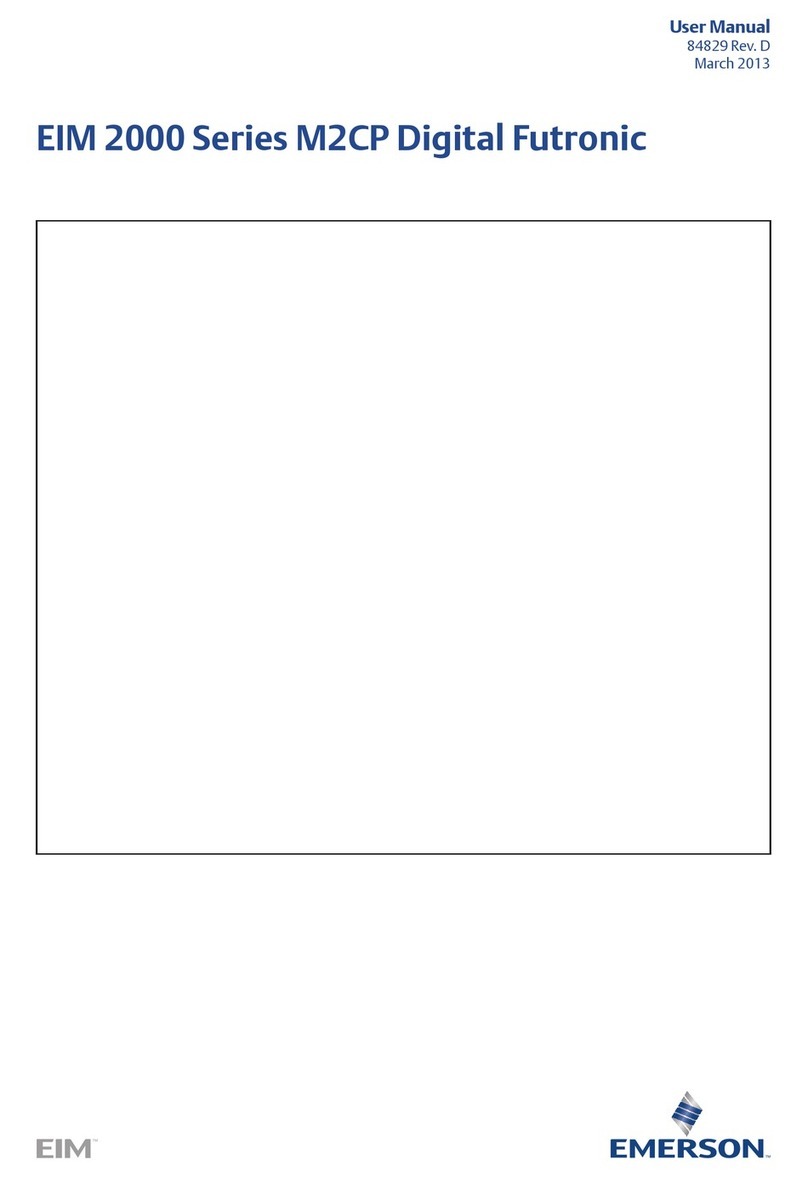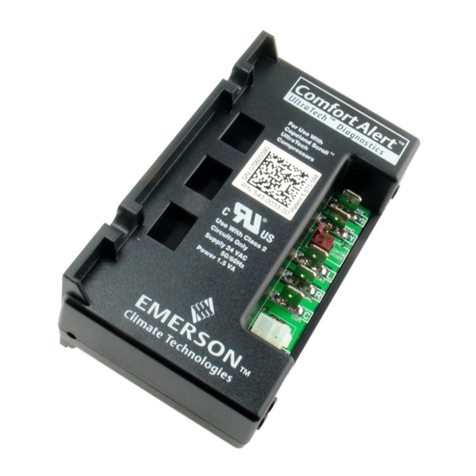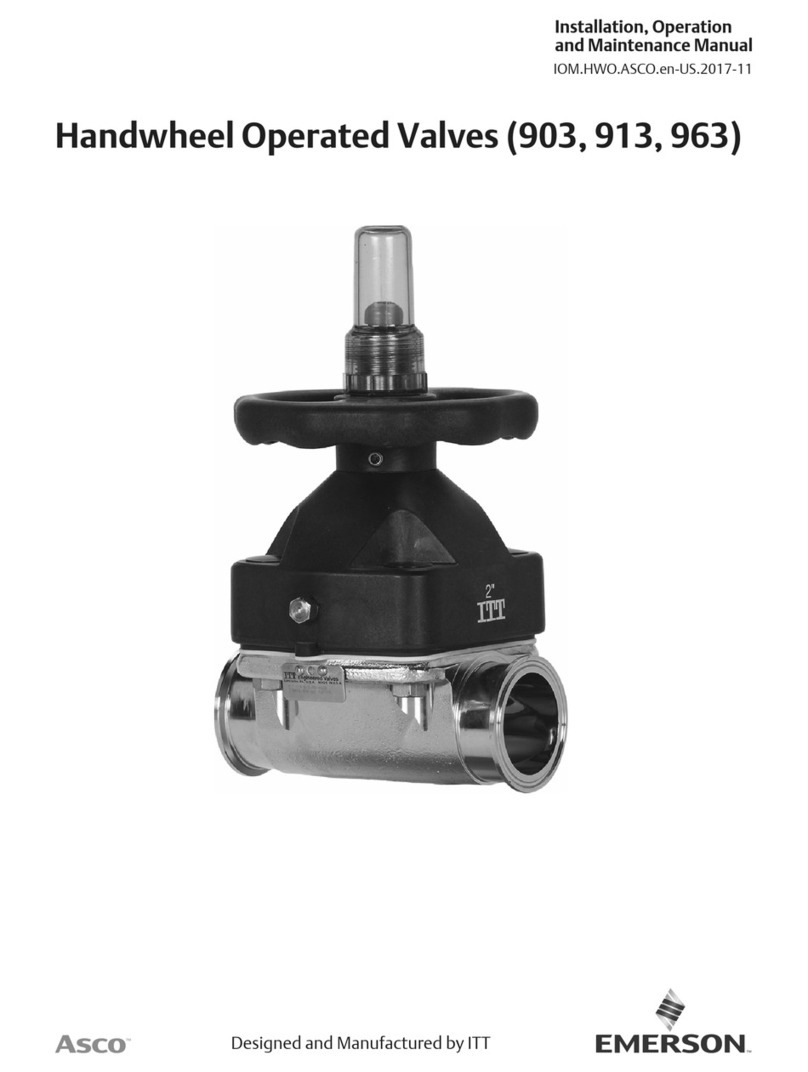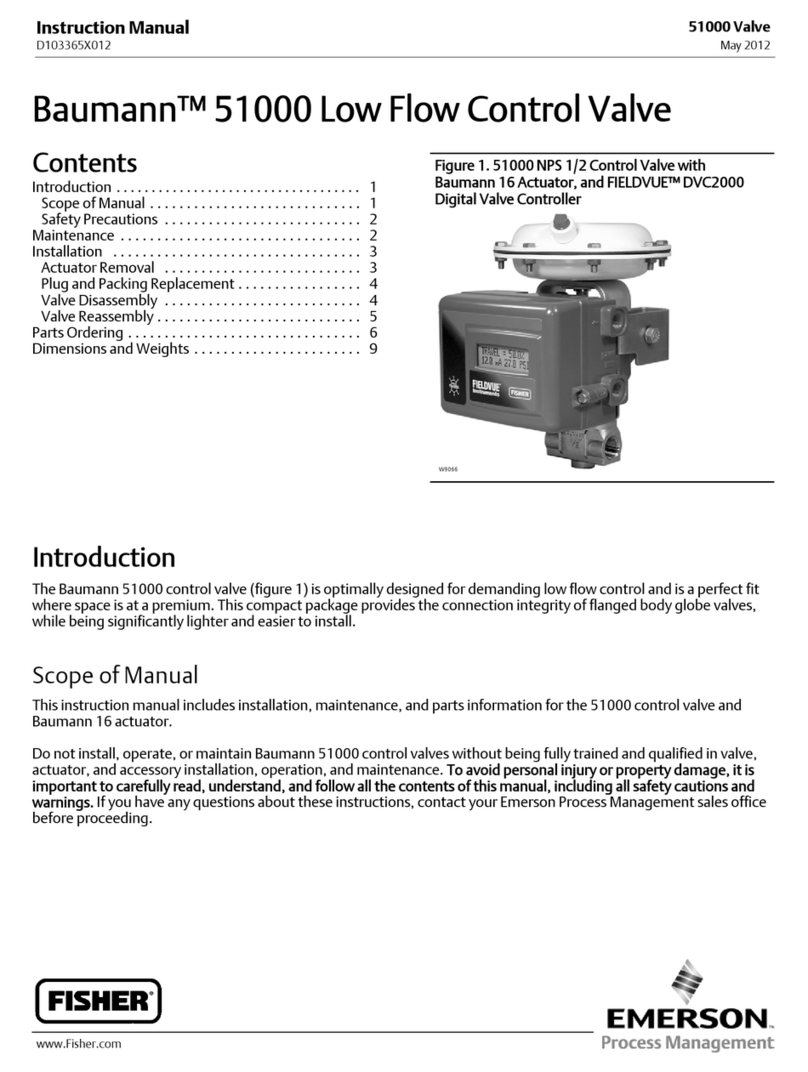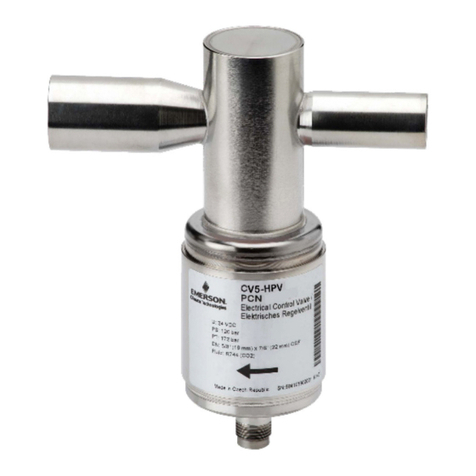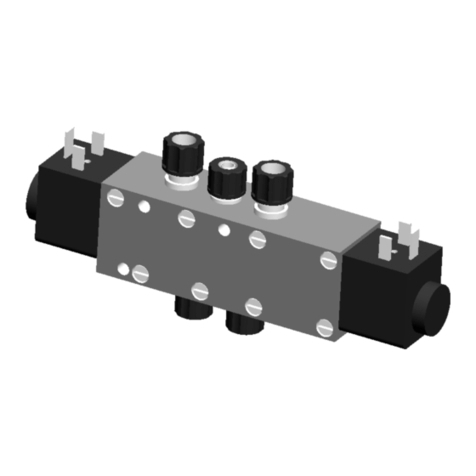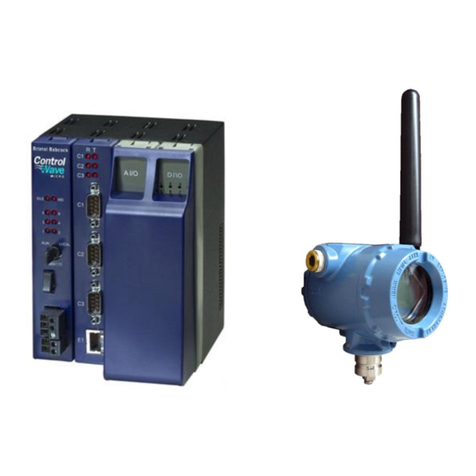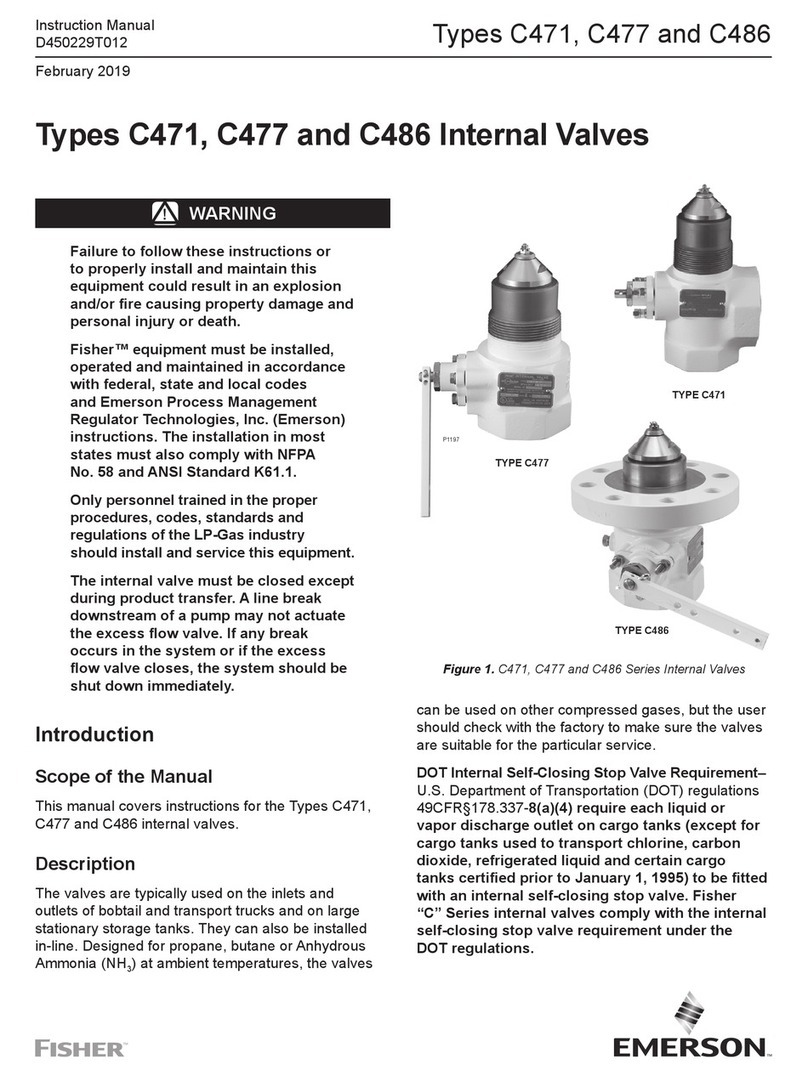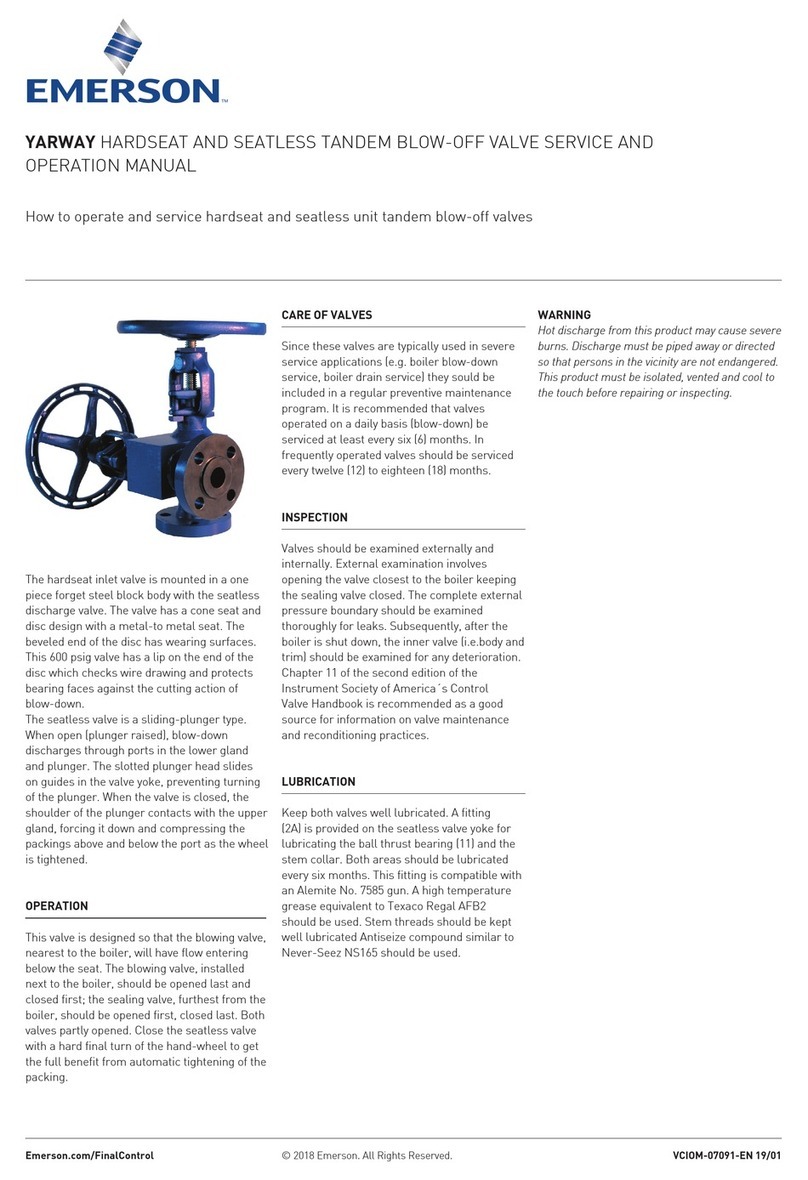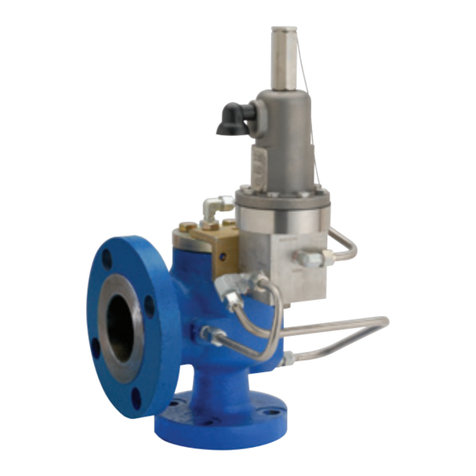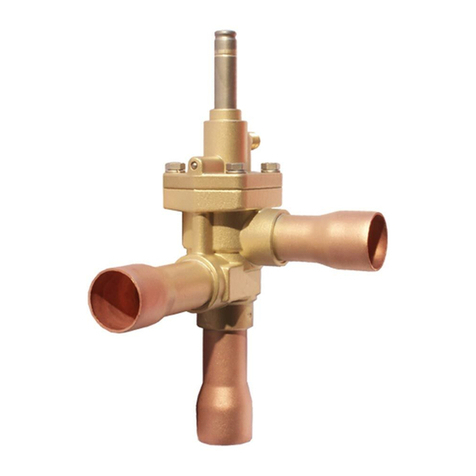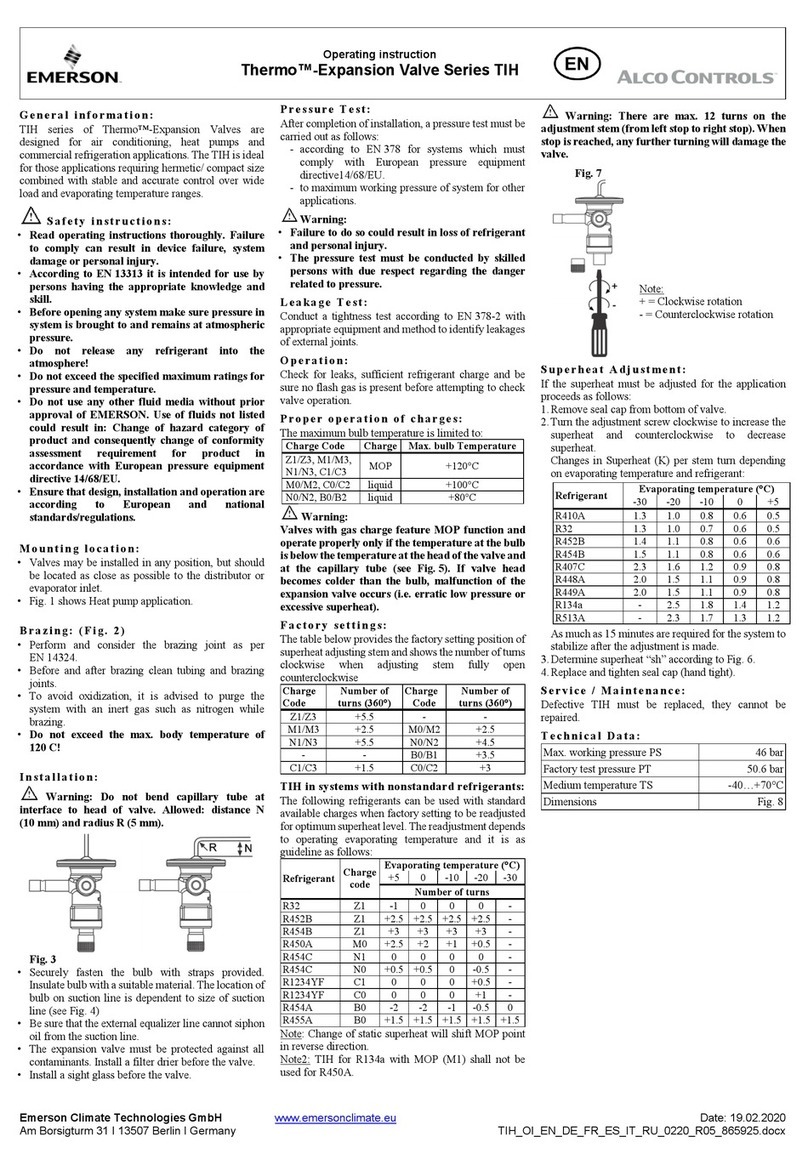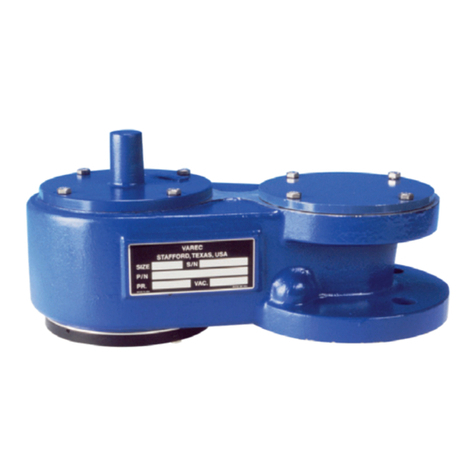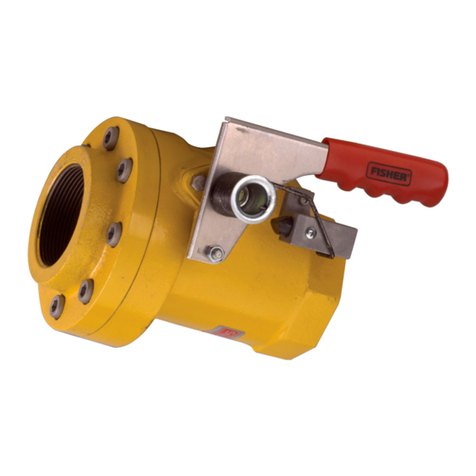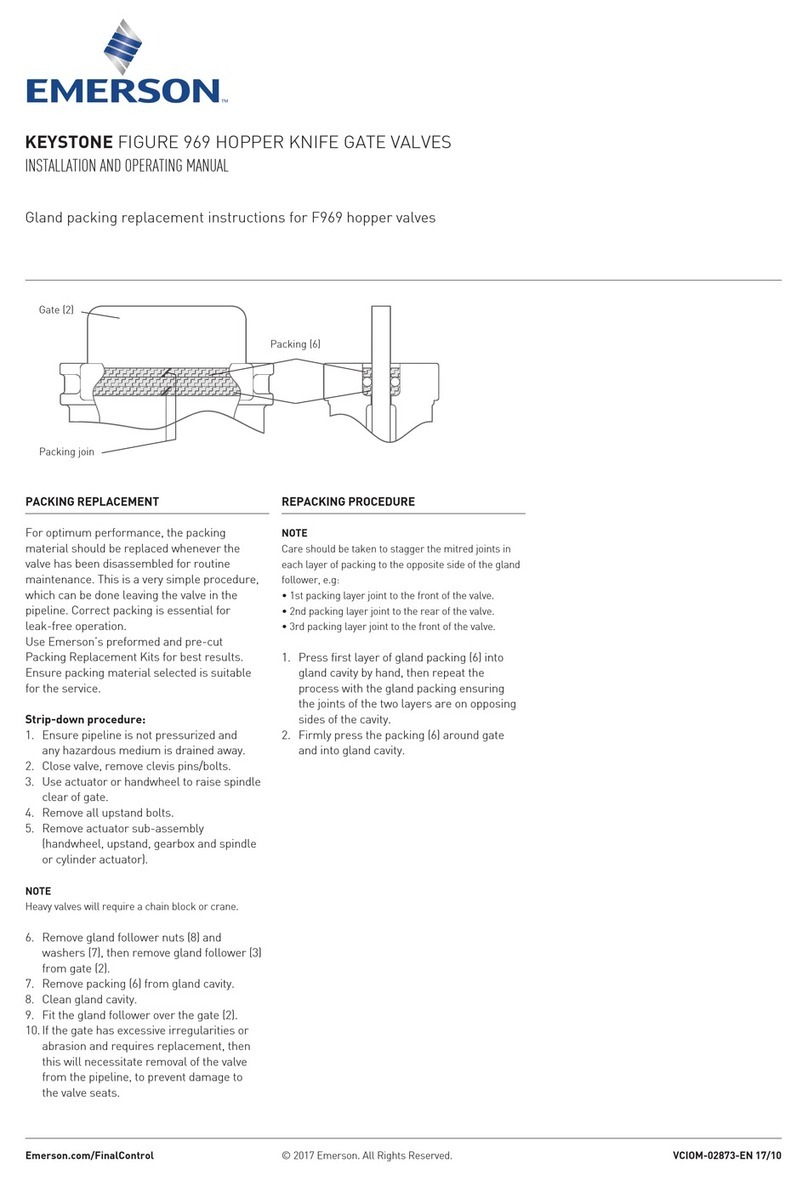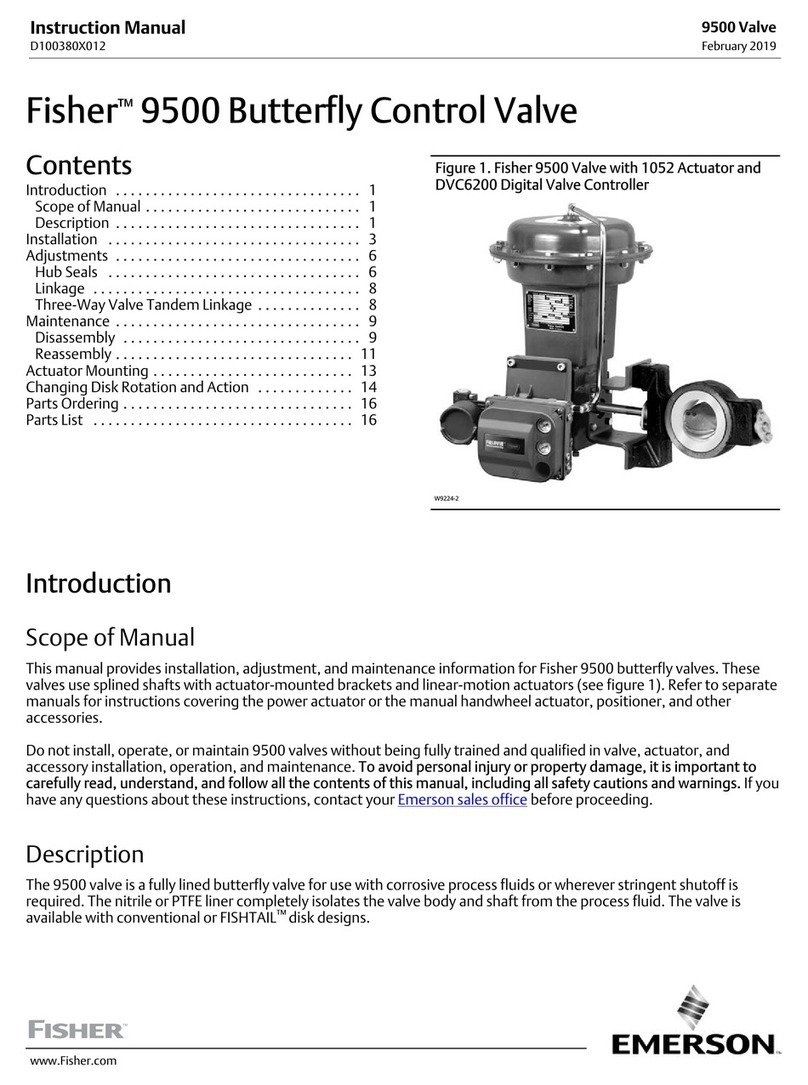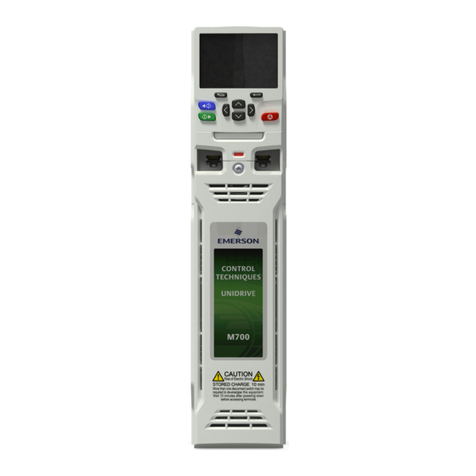
Type N201
4
Table 1. Maximum Supply Pressure and Maximum
Recommended Pump Discharge
MINIMUM SUPPLY
PRESSURE, PSIG (bar)
MAXIMUM RECOMMENDED PUMP
DISCHARGE, PSIG (bar)
21 (1,4) 200 (13,8)
19 (1,3) 150 (10,3)
17 (1,2) 100 (6,9)
14 (0,97) 50 (3,4)
13 (0,90) 25 (1,7)
5. Attach the propane lling hose to one of the ller
valve outlets. Plug the other outlet. The lling hose
must be complete with a shutoff valve and suitable
cylinder valve connection. The lling hose and
shutoff valve can be counterbalanced for easy
handling if desired.
Operation
1. Place cylinder on scale platform and connect
ller hose.
2. Slide beam weight “H” to tare weight stamped
on cylinder.
3. Balance scales to compensate for the weight
added by the ller hose and shutoff valve. On
some scales this can be done by means of a small
weight near the beam pivot pin. On others a
suitable weight can be added to scale pan “F”.
4. Add a 100 pounds (45 kg) weight (or the net
weight desired) to scale pan “F”, and open the
cylinder and hose valve for trial automatic
lling operation.
5. Proceed with lling operation until scale beam
rises and contacts the trip valve stem. The ller
valve will close and the lling operation is
complete. This is indicated by the red button on
top of the ller valve. Close the hose shutoff valve
and the cylinder valve.
6. Check weight of full cylinder on another scale.
Balance weight or the weight in scale pan “F” may
have to be readjusted slightly until the correct
cylinder weight is obtained. Filling accuracy is
largely dependent upon the condition of the scale
used with Type N201.
7. After the scales have been checked and
adjusted, simply position the empty cylinder on
the scale, connect the lling hose, slide beam
weight “H” to the tare weight stamped on the
cylinder, open the hose shutoff valve and the
cylinder valve, and the Type N201 will ll the
cylinder to the weight added on the scale pan.
Note
When operating with high pump
pressure, the ller valve may close o,
then reopen for a short spurt and close
o again. This is due to the force of the
incoming liquid stream. If the proper
cylinder weight has been obtained
before the additional spurt, the operator
should immediately close the hose
shuto valve when the scale beam
contacts the trip valve stem. If the
scales are balanced after the additional
spurt, the operator should wait for this
before closing the hose shuto valve.
In Case of Trouble
1. If sticking of the main (upper) valve should
occur, place a few drops of oil below the disk
holder (key 5, Figure 4). This can be done
with an eye dropper or oil can through one of the
outlet ports. Refer to the disassembly instructions
if this does not correct the situation.
2. If the disk holder wears out quickly, check the
outlet pressure of regulator no. 2. Too high a
regulator setting will cause the disk to fail. Refer
to step 4 under “Installation”.
3. If the trip valve stem “B” should stick, remove the
lower trip valve body, and clean out all oil or
grease. Polish the seat in the trip valve body by
rotating the eraser end of a pencil against the seat
10 or 12 times.
Disassembly
To check disk holder assembly, O-ring, and
diaphragms proceed as follows (numbers in
parenthesis refer to key numbers in Figure 4):
1. Remove tubing connection from the angle adaptor
in Type 67/683 (key 30).
2. Mark the valve body (key 17), valve housing
(key 2), and valve head (key 1) so that they can be
aligned easily when reassembling.
3. Remove cap screws (key 22).
4. Separate the valve head (key 1), valve housing
(key 2), and valve body (key 17). Examine
the upper and lower diaphragms (keys 10 and 32).
Replace if necessary.
